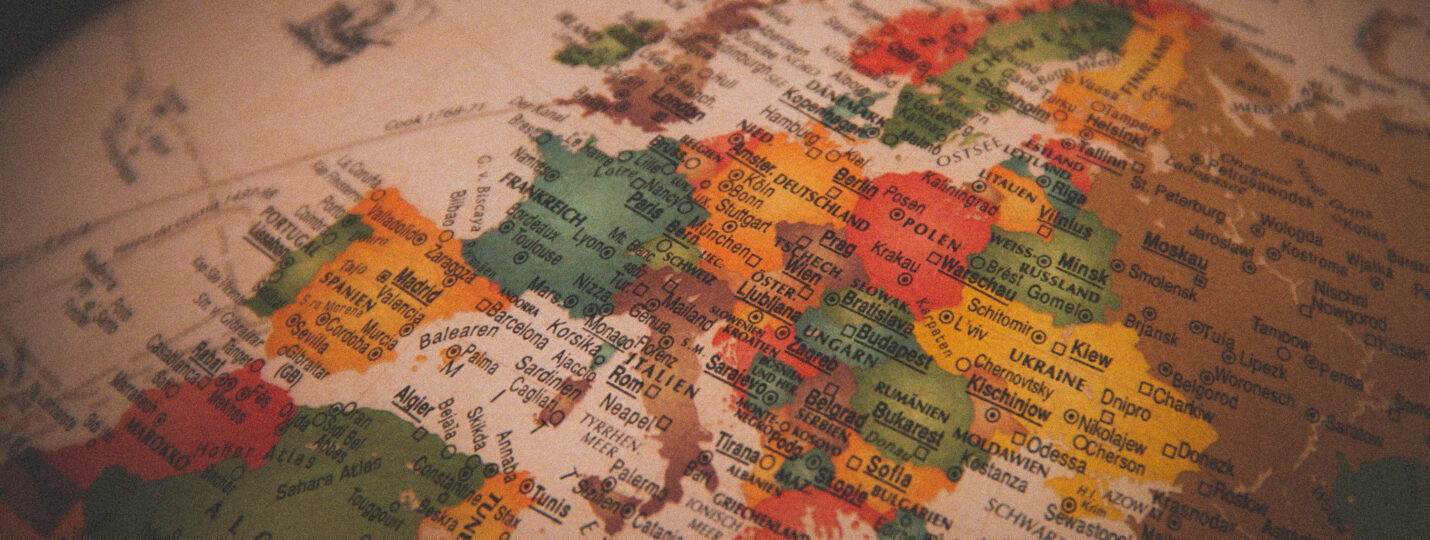
Poorest Countries in Europe in 2024
Within the grandeur of the European Union, renowned for its economic prowess that rivals global giants like the United States and China (the precise ranking a mercurial dance), lies a hidden reality.
While behemoths such as Germany reign with the fourth-largest economy worldwide, a deeper exploration of the continent’s economic tapestry exposes a profound divergence. Emanating from the ashes of the Soviet Union’s collapse, Eastern European countries bear the weight of present-day impoverishment, serving as poignant reminders of a tumultuous past.
In this captivating journey, we delve into the shadows, shedding light on the distinctive tales of Europe’s struggling nations, an intricate web of disparity that often evades the limelight. Prepare to be enthralled as we unearth the hidden chapters of Europe’s poorest landscapes, painting a vivid canvas of contrasts that defies conventional perception.
10 Poorest Countries in Europe in 2023
The ten poorest countries in Europe are as follows:

 Russia
Russia
Beyond the majestic facade, Russia conceals the stark realities of economic disparity. Amidst abundant resources, the nation grapples with challenges, yearning for harmony and prosperity.

 Bulgaria
Bulgaria
Bulgaria's ancient wonders juxtapose its economic struggles as it strives to transcend the clutches of poverty. Unraveling a tapestry of perseverance and untapped potential, the nation sets its sights on a brighter horizon.

 Montenegro
Montenegro
Montenegro's awe-inspiring vistas belie the economic strife that persists. Amidst captivating landscapes, a tenacious nation aspires to a brighter future, navigating the complexities of development.

 Serbia
Serbia
Serenity collides with the struggle in Serbia, where a resilient spirit confronts economic barriers. Amidst a heritage rich in wonders, the nation charts a path toward prosperity.

 Belarus
Belarus
Amongst the sweeping landscapes, Belarus silently battles poverty's grip. Untold stories unfold, revealing an insatiable thirst for progress amidst an undercurrent of resilience.

 Bosnia and Herzegovina
Bosnia and Herzegovina
Vibrant culture masks the economic hurdles faced by Bosnia and Herzegovina. In a crucible of diversity, a nation emerges resolute, determined to surmount adversity.

 North Macedonia
North Macedonia
Deep within the Balkans, North Macedonia faces economic trials, unearthing a tapestry of cultural treasures that defy the odds, weaving tales of unwavering resilience.

 Albania
Albania
Amidst Albania's sun-drenched landscapes, an arduous battle against poverty rages on. A portrait of resilience emerges from the shadows, as the nation endeavors to bridge the divide, defying adversity.

 Moldova
Moldova
Nestled in the charm of Eastern Europe, Moldova grapples with economic hardships, striving to break free from its plight as one of Europe's impoverished nations. Its indomitable spirit ignites hope for a better tomorrow.

 Ukraine
Ukraine
Echoes of resilience reverberate across Ukraine's vast plains as it wrestles with the shackles of poverty. Enveloped in historic legacies, the nation forges ahead, driven by a yearning for economic metamorphosis.
Methodology: GNI Per Capita & GDP Per Capita
When gauging a nation’s wealth, two key indicators may come into play: Gross National Income (GNI) per capita and Gross Domestic Product (GDP) per capita.
GNI per capita measures the average income earned by the residents of a country, including both domestic and international sources. It serves as a metric to evaluate the financial well-being of individuals within a country. This indicator takes into account not only the income generated within the nation’s borders but also the income from abroad, providing a comprehensive perspective on the overall economic capacity and standard of living.
GDP per capita, on the other hand, quantifies the economic output within a country’s borders. It assesses the total value of goods and services produced within a specific timeframe, divided by the population. GDP per capita is a widely used measure to understand a nation’s economic growth and development. It provides insights into the productivity and efficiency of a country’s industries and sectors, shaping policies, and influencing investment decisions.
Together, GNI per capita and GDP per capita play crucial roles in assessing a nation’s wealth. While GNI per capita reflects the income available to individuals, GDP per capita provides a broader perspective on a country’s economic performance. These indicators enable policymakers, economists, and analysts to compare countries, identify disparities, and make informed decisions regarding economic policies, development strategies, and international economic relations.
20 Poorest Countries in Europe
Country | GNI Per Capita | GDP Per Capita | GDP Total |
Ukraine | $3,540 | $3,726.93 | $155.58 Bn |
Moldova | $4,570 | $4,551.13 | $11.91 Bn |
Albania | $5,210 | $5,215.28 | $14.80 Bn |
North Macedonia | $5,720 | $5,888 | $12.27 Bn |
Bosnia And Herzegovina | $6,090 | $6,031.56 | $19.79 Bn |
Belarus | $6,330 | $6,411.23 | $60.26 Bn |
Serbia | $7,400 | $7,666.24 | $52.96 Bn |
Montenegro | $7,900 | $7,686.09 | $4.78 Bn |
Bulgaria | $9,540 | $9,975.78 | $69.11 Bn |
Russia | $10,690 | $10,126.72 | $1.48 Tn |
Romania | $12,570 | $12,896.09 | $248.72 Bn |
Croatia | $14,190 | $13,828.47 | $55.97 Bn |
Poland | $15,270 | $15,656.18 | $594.16 Bn |
Hungary | $16,530 | $15,899.15 | $155.01 Bn |
Latvia | $17,730 | $17,619.95 | $33.51 Bn |
Greece | $19,690 | $17,676.19 | $189.41 Bn |
Slovakia | $18,700 | $19,156.89 | $104.57 Bn |
Lithuania | $19,000 | $19,997.59 | $55.89 Bn |
Portugal | $22,000 | $22,439.88 | $231.26 Bn |
Czech Republic | $21,930 | $22,762.20 | $243.53 Bn |
Empowering the Poorest European Countries: Key Measures for Progress
- Targeted Investment: Channel resources into infrastructure development, education, and healthcare systems, fostering sustainable growth and improving quality of life.
- Promote Economic Diversification: Encourage the development of diverse industries to reduce reliance on a single sector, fostering resilience and opening avenues for employment and innovation.
- Enhance Access to Education: Prioritize education as a catalyst for change, providing quality schooling and vocational training to equip individuals with skills for economic opportunities.
- Strengthen Social Safety Nets: Establish robust social protection programs to mitigate the impacts of poverty, ensuring access to healthcare, social assistance, and support for vulnerable populations.
- Foster Entrepreneurship and Small Businesses: Create an enabling environment for startups and small enterprises, providing access to funding, mentorship, and business development resources.
- Facilitate International Partnerships: Forge alliances with international organizations and neighboring countries, promoting trade, knowledge exchange, and investment to stimulate economic growth.
- Enhance Governance and Transparency: Strengthen institutions, improve governance frameworks, and combat corruption to instill trust, attract investments, and ensure effective utilization of resources.
- Foster Regional Cooperation: Encourage collaboration among neighboring countries to address shared challenges, foster regional stability, and leverage collective strengths for socio-economic development.
- Invest in Sustainable Agriculture: Support agriculture and rural development initiatives, promoting sustainable practices, increasing productivity, and enhancing food security in impoverished regions.
- Empower Local Communities: Engage communities in decision-making processes, prioritize their participation, and support grassroots initiatives that address local needs and foster inclusive development.
Poorest Countries in Europe: Conclusion
In concluding our exploration of Europe’s poorest countries, we confront a sobering truth. Behind the façade of prosperity, these nations grapple with economic hardships, requiring focused attention and strategic interventions.
Targeted investment, industry diversification, and access to quality education are key drivers for progress. Strengthening social safety nets, fostering entrepreneurship, and promoting regional cooperation can pave the way for inclusive development.
Through empowering local communities, enhancing governance, and embracing sustainability, we can collectively shape a more prosperous and equitable future for Europe’s most vulnerable nations.
Frequently Asked Questions
Which are the poorest countries in Europe?
The poorest countries in Europe are those that face significant economic challenges and struggle with poverty. These nations, often referred to as Europe's poorest countries, include Ukraine, Moldova, Albania, North Macedonia, Bosnia and Herzegovina, and Bulgaria.
How is the poverty level determined in European countries?
The poverty level in European countries is determined based on various factors, including income levels, access to basic necessities, healthcare, education, and overall living standards. Measures such as Gross National Income (GNI) per capita and Gross Domestic Product (GDP) per capita are used to assess and compare the economic well-being of nations.
What steps can be taken to improve conditions in Europe's poorest countries?
To improve conditions in Europe's poorest countries, targeted measures can be implemented. These include investments in infrastructure, education, and healthcare, promotion of economic diversification, enhancement of social safety nets, fostering entrepreneurship, strengthening governance, and encouraging regional cooperation. These efforts aim to uplift living standards, stimulate economic growth, and foster sustainable development.
How does poverty impact the social fabric of European countries?
Poverty can have far-reaching impacts on the social fabric of European countries. It can lead to inequalities, limited access to education and healthcare, social exclusion, and reduced opportunities for socio-economic mobility. Addressing poverty and promoting inclusive growth are crucial for creating a cohesive society and ensuring a better quality of life for all citizens.
Is the European Union actively involved in addressing poverty in the poorest countries?
The European Union recognizes the importance of addressing poverty and promoting inclusive development. It implements various policies, initiatives, and funding programs to support the poorest countries and foster economic growth. However, the specific measures and level of involvement may vary, as the EU seeks to balance the diverse needs and priorities of its member states.
How does the economic prosperity of European countries impact poverty rates?
Economic prosperity plays a significant role in reducing poverty rates. Higher levels of economic prosperity can provide greater opportunities for income generation, access to quality education and healthcare, and social mobility. However, it is important to note that economic prosperity alone is not always sufficient, as factors such as equitable distribution of resources and targeted interventions are also crucial in reducing poverty in European countries.
What are some success stories of European countries overcoming poverty?
There are examples of European countries that have made significant progress in overcoming poverty and improving living conditions. For instance, countries like Estonia and Lithuania have experienced remarkable economic growth and successfully reduced poverty rates through targeted policies, investments in education, and fostering innovation. These success stories demonstrate the potential for positive change even in Europe's poorest countries.
How can international cooperation contribute to combating poverty in European countries?
International cooperation plays a vital role in combating poverty in European countries. Collaborative efforts between governments, international organizations, and development partners can facilitate knowledge sharing, resource mobilization, and technical assistance. By leveraging collective strengths and experiences, countries can learn from successful models, implement effective poverty reduction strategies

 Russia
Russia Bulgaria
Bulgaria Montenegro
Montenegro Serbia
Serbia Belarus
Belarus Bosnia and Herzegovina
Bosnia and Herzegovina North Macedonia
North Macedonia Albania
Albania Moldova
Moldova Ukraine
Ukraine



